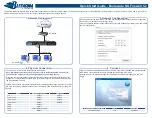
Table 16: show security policies Output Fields
(continued)
Field Description
Field Name
Name of a preconfigured or custom application whose type the packet matches, as
specified at configuration time.
•
IP protocol
: The Internet protocol used by the application—for example, TCP, UDP,
ICMP.
•
ALG
: If an ALG is explicitly associated with the policy, the name of the ALG is displayed.
If
application-protocol ignore
is configured, ignore is displayed. Otherwise, 0 is displayed.
However, even if this command shows ALG: 0, ALGs might be triggered for packets
destined to well-known ports on which ALGs are listening, unless ALGs are explicitly
disabled or when
application-protocol ignore
is not configured for custom applications.
•
Inactivity timeout
: Elapsed time without activity after which the application is
terminated.
•
Source port range
: The low-high source port range for the session application.
Applications
Status of the destination address translation traffic:
•
drop translated
—Drop the packets with translated destination addresses.
•
drop untranslated
—Drop the packets without translated destination addresses.
Destination Address Translation
An application firewall includes the following:
•
Rule-set
—Name of the rule set.
•
Rule
—Name of the rule.
•
Dynamic applications
—Name of the applications.
•
Dynamic application groups
—Name of the application groups.
•
Action
—The action taken with respect to a packet that matches the application
firewall rule set. Actions include the following:
•
permit
•
deny
•
Default rule
—The default rule applied when the identified application is not specified
in any rules of the rule set.
Application Firewall
•
The action taken in regard to a packet that matches the policy’s tuples. Actions include
the following:
•
permit
•
firewall-authentication
•
tunnel ipsec-vpn
vpn-name
•
pair-policy
pair-policy-name
•
source-nat pool
pool-name
•
pool-set
pool-set-name
•
interface
•
destination-nat
name
•
deny
•
reject
•
services-offload
Action or Action-type
Session log entry that indicates whether the
at-create
and
at-close
flags were set at
configuration time to log session information.
Session log
Copyright © 2016, Juniper Networks, Inc.
122
Getting Started Guide for Branch SRX Series
Summary of Contents for Junos OS
Page 6: ...Copyright 2016 Juniper Networks Inc vi Getting Started Guide for Branch SRX Series...
Page 8: ...Copyright 2016 Juniper Networks Inc viii Getting Started Guide for Branch SRX Series...
Page 10: ...Copyright 2016 Juniper Networks Inc x Getting Started Guide for Branch SRX Series...
Page 18: ...Copyright 2016 Juniper Networks Inc 2 Getting Started Guide for Branch SRX Series...
Page 20: ...Copyright 2016 Juniper Networks Inc 4 Getting Started Guide for Branch SRX Series...
Page 22: ...Copyright 2016 Juniper Networks Inc 6 Getting Started Guide for Branch SRX Series...
Page 32: ...Copyright 2016 Juniper Networks Inc 16 Getting Started Guide for Branch SRX Series...
Page 42: ...Copyright 2016 Juniper Networks Inc 26 Getting Started Guide for Branch SRX Series...
Page 44: ...Copyright 2016 Juniper Networks Inc 28 Getting Started Guide for Branch SRX Series...
Page 46: ...Copyright 2016 Juniper Networks Inc 30 Getting Started Guide for Branch SRX Series...
Page 54: ...Copyright 2016 Juniper Networks Inc 38 Getting Started Guide for Branch SRX Series...
Page 62: ...Copyright 2016 Juniper Networks Inc 46 Getting Started Guide for Branch SRX Series...
Page 78: ...Copyright 2016 Juniper Networks Inc 62 Getting Started Guide for Branch SRX Series...
Page 86: ...Copyright 2016 Juniper Networks Inc 70 Getting Started Guide for Branch SRX Series...
Page 90: ...Copyright 2016 Juniper Networks Inc 74 Getting Started Guide for Branch SRX Series...
Page 155: ...PART 5 Index Index on page 141 139 Copyright 2016 Juniper Networks Inc...
Page 156: ...Copyright 2016 Juniper Networks Inc 140 Getting Started Guide for Branch SRX Series...















































